The P-51D Mustang is not only one of the most iconic aircraft ever built, it is also arguably the most effective all-round fighter-bomber of WW2. Armed with six .50 caliber Browning machine guns, the Mustang was also able to carry either two bombs or up to ten unguided rockets.
The Mustang began combat operations with the RAF in April 1942, immediately proving its effectiveness both as a fighter and in ‘Rhubarb’ low-level fighter-bomber attacks against enemy airfields, supply trains and in the close air support role. It was especially dominant in dogfights above 20,000. With its graceful lines, distinctive bubble canopy and clipped wings, the ‘D’ variant rapidly became the mainstay of the United States 8th Air Force in Europe.
Powered by the Packard V-1650-7, a license-built version of the two-speed, two-stage supercharged Rolls-Royce Merlin 66, the Mustang had a maximum speed of 390 miles per hour and a combat range of roughly 750 miles (1,200 km). The use of external drop tanks increased the P-51D’s operational range to 1,375 miles (2,200 km), enabling it to escort Allied bombers on long-range missions to the heart of Germany. The P-51D played a major role in establishing Allied air superiority during the June, 1944 D-Day invasion of Normandy, and in maintaining air supremacy as Allied forces fought their way towards Berlin.
Mustang pilots chalked up almost 5,000 victories over enemy aircraft in WW2. The DCS: P-51D is a superb module. Fly it and see for yourself.
The P-51D propeller is a Hamilton Standard four-blade, hydraulic, constant-speed propeller with a diameter of 11 ft, 2 in and a blade pitch range of 42°, set at 23° at low pitch and 65° at high pitch. The propeller RPM is controlled by the Propeller Control lever on the throttle quadrant in the cockpit. The propeller governor automatically controls propeller pitch to maintain a constant speed between 1800 and 3000 RPM, depending on the Propeller Control setting. The propeller cannot be feathered.
The Mustang features two main fuel tanks, one in each wing. The main tanks have a capacity of 92 gallons in each or a total of 184 gallons. An auxiliary 85 gallon tank is installed in the fuselage aft of the cockpit. There is also provision for carrying two droppable combat tanks on the wing bomb racks. These are available in 75-gallon and 110-gallon capacities. The total fuel capacity of the aircraft, including two 110-gallon droppable tanks, is 489 U.S. gallons.
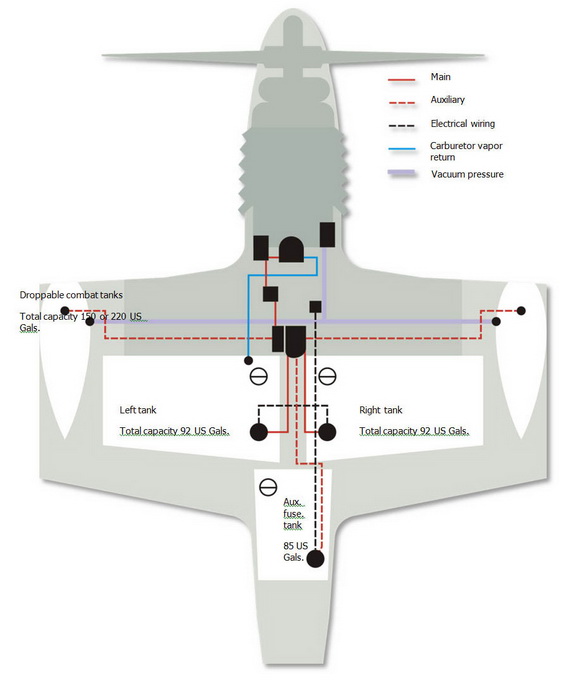
The P-51D is equipped with two separate hydraulic systems. One is the main power system for the operation of the landing gear and wing flaps. The other system is the foot pedal-operated brake system. The only connection between the two systems is that they receive their supply of fluid from the same reservoir in which a 3 cubic in. capacity cup is arranged so that in the event all the hydraulic fluid from the main power system might be lost, the brakes may still be operated.
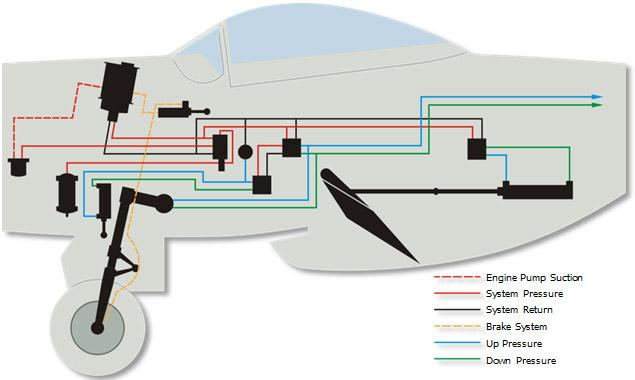
The oil system includes a tank just forward of the firewall and a radiator in the air scoop under the fuselage. The full capacity of the oil system is 21 U.S gallons. The tank is a hopper type - that is, it is designed with hoppers or compartments which facilitate quick warm-up and also make it possible to fly the aircraft in adverse attitudes or with little oil in the system.
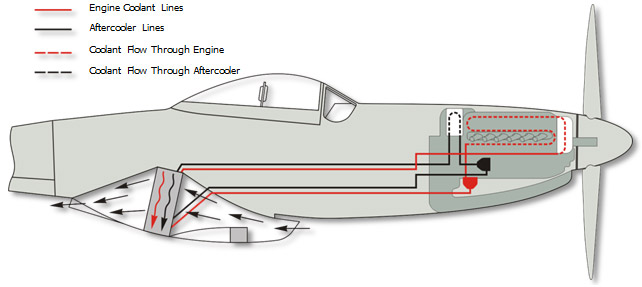
With the radiators located in the big air scoop aft of the cockpit under the fuselage, the cooling of the P-51 engine is quite different from that of most other fighters of the era. The engine is cooled by liquid in two separate cooling systems. The first system cools the engine proper, the second (called the after-cooling system) cools the supercharger fuel-air mixture. Each performs a separate function and the systems are not connected in any way. They both pass through a single large radiator, but in different compartments.
The electrical system is a 24-volt, direct-current (DC) system which provides power for operating the various aircraft systems, controls, and lighting equipment. The system employs the aircraft's metallic structure as a common ground return.
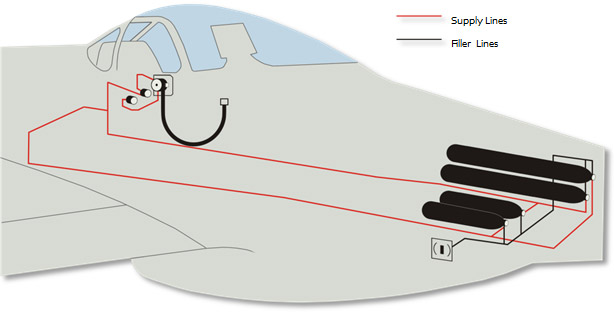
The oxygen system of the P-51D is a low-pressure, demand-type system. A regulator automatically provides the correct amount of oxygen required at any altitude. Controls and gauges for the oxygen system are located in the right front section of the cockpit and include an automatic mixture regulator, a pressure gauge, and a blinker indicator which opens when the pilot inhales and closes when the pilot exhales.
The radio equipment of the P-51D consists of a SCR-522 VHF (Very High Frequency) radio for voice communication and radio homing, a Detrola LF (Low Frequency) radio receiver, an AN/APS-13 rear-warning radar, and an SCR-695A IFF (Identification Friend or Foe) radio.
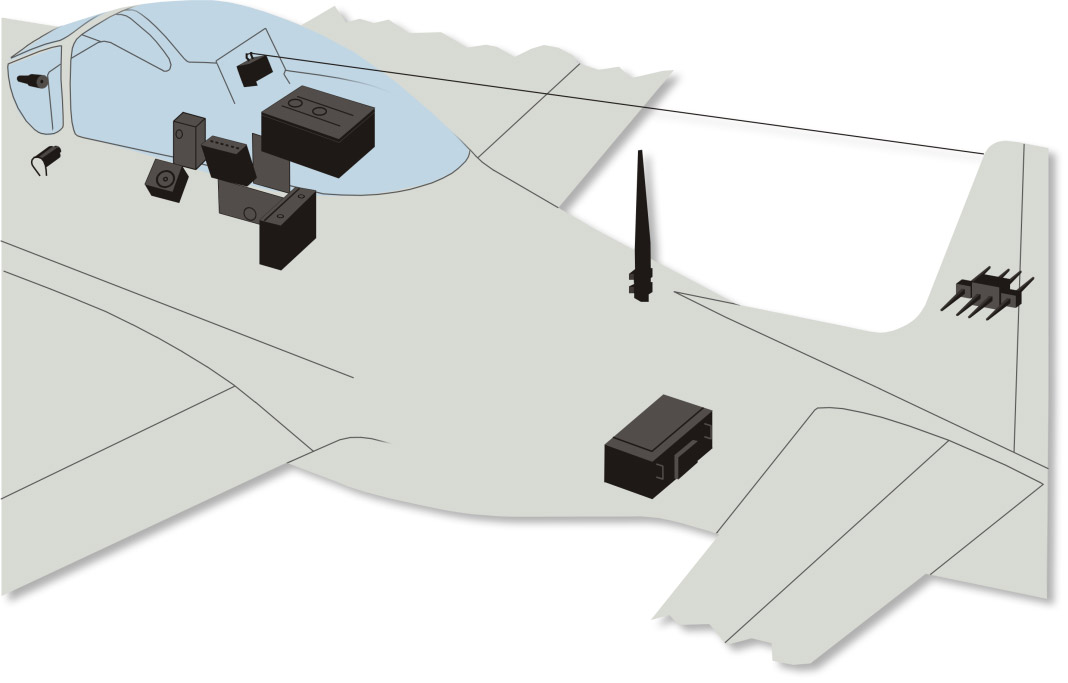
The landing gear consists of two main gears and a tail gear. All three units are fully retractable hydraulically and are controlled simultaneously by the Landing Gear Control handle on the left side of the cockpit. When the landing gear is retracted, the main gear is completely enclosed in the wings and the tail gear is completely enclosed in the fuselage. The tail wheel is steerable and full swiveling. When the control stick the neutral position of pulled back, the tail wheel is locked; in this position it is steerable 6° to the right or left through the use of the rudder pedals. With the control stick positioned forward of neutral, the tail wheel is unlocked for free swiveling action.
The undercarriage mechanics provide natural behavior during various flight conditions.
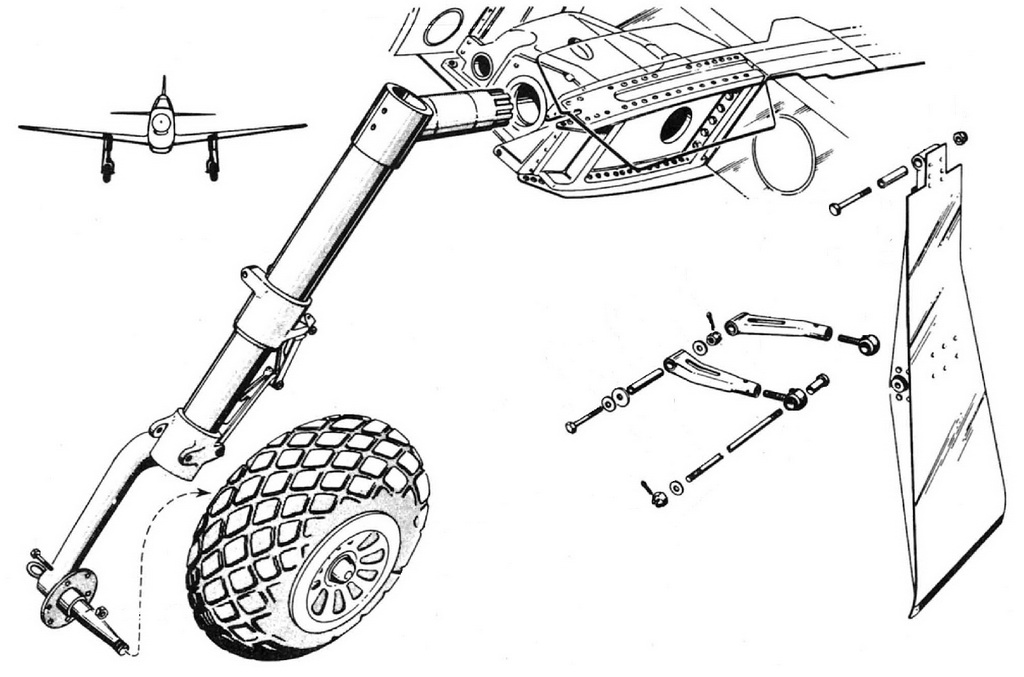
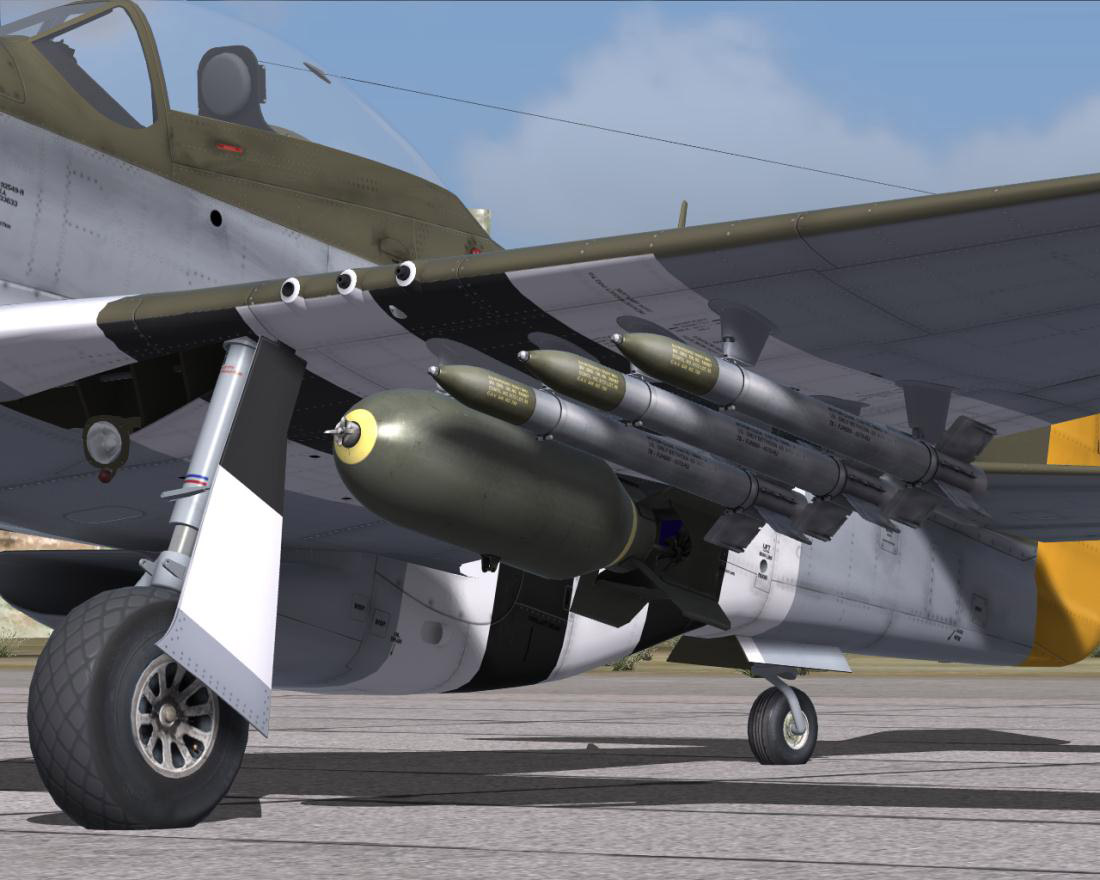
The P-51D is equipped with six free-firing .50 caliber machine guns, three in each wing. The guns are manually charged on the ground and fire simultaneously when the Gun Trigger switch is pressed on the front of the control stick grip. The maximum ammunition capacity is 400 rounds for each of the inboard guns and 270 rounds for the center and outboard guns for a total ammunition load of 1880 rounds. The guns can be adjusted on the ground for different convergence points based on the tactical needs of the mission. Normally the convergence point is set to 250 - 300 yards. The amount of ammunition remaining is not indicated in the cockpit.
If the mission needs require longer firing time, it’s possible to remove the center gun in each wing. This allows each outboard gun to be loaded with 500 rounds.
A single removable bomb rack can be attached to each wing. These can be loaded with either 100, 250, or 500 pound bombs. If bombs are not installed, chemical smoke tanks or droppable fuel tanks may be hung on the bomb racks. Bombs are released by pressing the Bomb-Rocket Release switch on top of the control stick grip.
In addition to the machine guns and bombs, up to ten 5 in. rockets, five under each wing, can be equipped to perform ground attack missions. When bombs or droppable tanks are carried, only six rockets can be loaded, three on each wing. The rockets are fired by pressing the Bomb Release switch on top of the control stick grip.








